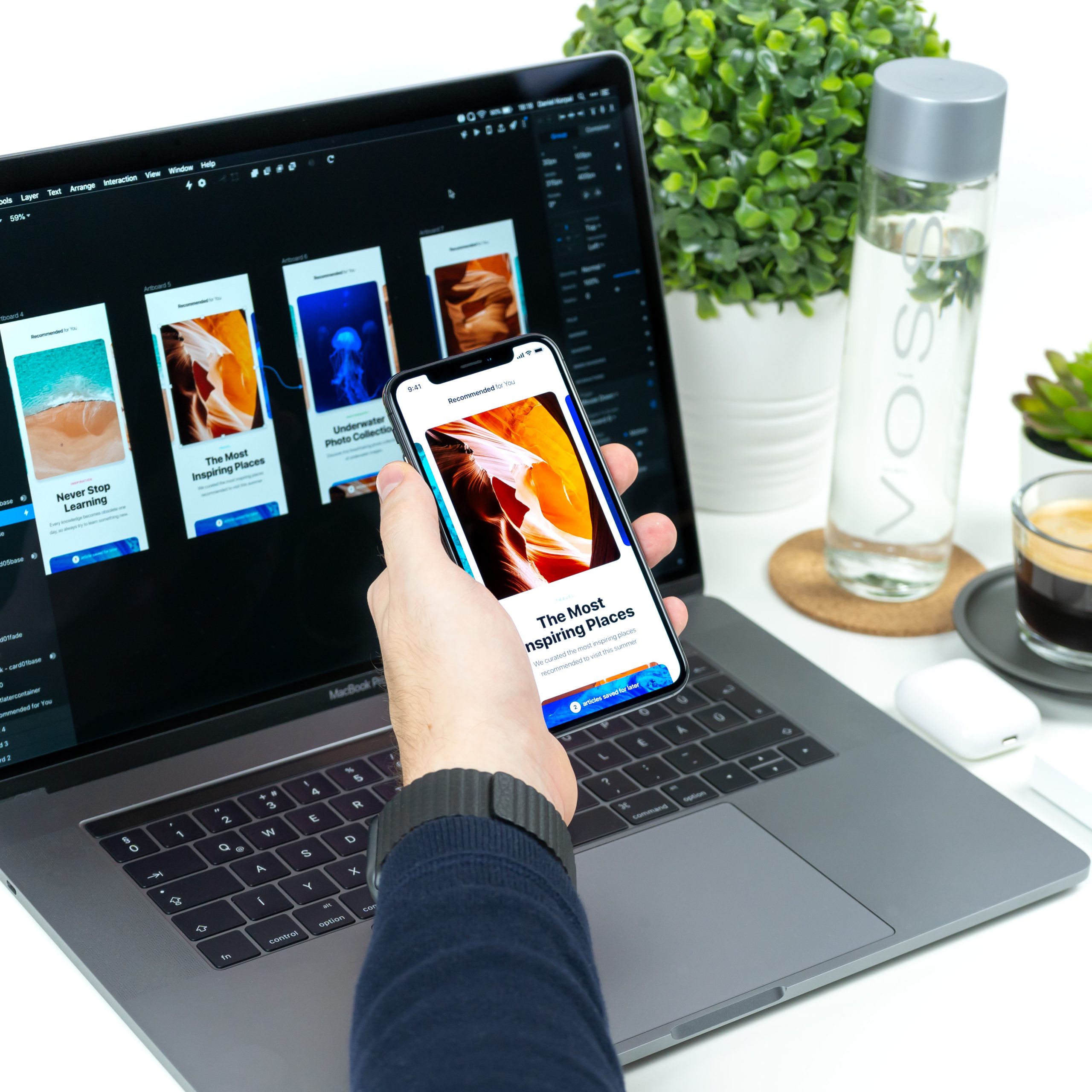App development projects come in various shapes and sizes – but there are usually some common stages of work that will help you to navigate through the process.
What are the 7 stages of app development?
- Defining your idea
- Discovery
- Design
- Development
- Testing
- Launch
- Ongoing work
This is the usual order of development work. However, it’s quite possible that your project will diverge from this blueprint.
Sometimes you may need to circle back to the previous stages of the journey. For example, the Testing stage can reveal issues which will need to be resolved through further design or development work. And when we reach the final stage – ‘Ongoing work’ – activity from each stage will become part of the routine work of maintaining the app.








